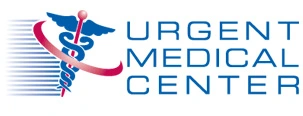Now that school is back in session, common back to school illnesses are again on the minds of parents and caregivers across the country. From the stomach flu to the common cold to strep throat, there are ways to prevent your children from falling ill. Of course, it’s important to not only know how to prevent these illnesses, but what to do should your children come down with one or more of these common back to school ailments. Here are some tips on prevention, as well as recognizing signs and symptoms and knowing when your children should see a doctor.
The Common Cold
While colds can come on unexpectedly and repeatedly throughout the school year, there are a few ways you can protect your children from colds. Reminding your children to wash their hands frequently is a good start, but teaching your children to take precautions when touching surfaces often used by others also helps.
Colds are actually contagious only the first few days, but that is more than enough time for the germs to be spread. Colds present with runny or stuffy noses, sneezing, sore throat, cough, head and body aches, fatigue, and a slight fever. Plenty of fluids and rest will help a cold resolve in a matter of days. If not, it may be time to seek the help of your family physician.
The Flu
Like a cold, the flu has similar symptoms though more severe. Symptoms of the flu include: fever, chills, a dry hacking cough, stuffy or runny nose, sore throat, severe fatigue and muscle, head, and body aches. When you suspect your child had the flu, a visit to your family doctor can perform a flu test and if needed, prescribe medication to help.
Pink Eye (Conjunctivitis – Viral or Bacterial)
Pink eye is very contagious and can spread through a classroom quickly. If you notice your child has these symptoms – burning and itching eye, pink or redness in the white area of the eye, mucous or other discharge from the eye, difficulty opening the eye, and sensitivity to light, see your doctor as soon as possible to determine the cause. If the pink eye is a result of bacteria, your physician can prescribe antibacterial medications to help. Once diagnosed, your child will need to stay home for a day or two until the symptoms subside. While at home, your children should wash their hands frequently and avoid contact with the infected eye.
The Stomach Flu (Viral Gastroenteritis)
The stomach flu is spread when your child is in close contact with an infected person, but it can also be contracted though eating or drinking contaminated foods or beverages. While parents teach their children to share, this is one time when sharing food, drinks, utensils, straws, etc. should be avoided. Vomiting and diarrhea are the common symptoms of the stomach flu. Currently the best treatment is rest and fluids, as no treatment is readily available. If the vomiting, diarrhea, pain, or fever is present for longer than two days, a visit to the doctor is needed for assessment and treatment.
Strep Throat
Strep Throat is highly contagious, the result of a bacterial infection. It is often passed through sneezing, coughing, and touching a contaminated surface. Strep Throat present with a severe sore throat, fever, swollen, sensitive lymph glands, headache, rash, fatigue, and vomiting. If Strep Throat is suspected, your child should be seen as soon as possible by a physician for testing, early detection, and treatment.





